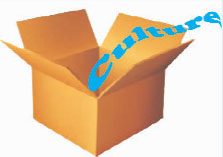Often, when people are asked ‘Who are you?’ they respond by giving their names. Sometimes they also give their addresses and depending on the situation in which the question is asked, they might give their job title, or they might refer to their lineage.
 If, for instance, someone has to differentiate between being Jane Doe of Hope as opposed to Jane Doe of Despair, that person will give her address. If it’s a case where Jane Doe is a doctor, she might want to say so, if there is a question as to her authority to speak to the medical aspect of something. And again, if Jane Doe’s presence in Hope raises a question, she might want to say who her parents, grandparents, aunties or uncles are. Invoking them might quell the queries. But is that who she really is?
If, for instance, someone has to differentiate between being Jane Doe of Hope as opposed to Jane Doe of Despair, that person will give her address. If it’s a case where Jane Doe is a doctor, she might want to say so, if there is a question as to her authority to speak to the medical aspect of something. And again, if Jane Doe’s presence in Hope raises a question, she might want to say who her parents, grandparents, aunties or uncles are. Invoking them might quell the queries. But is that who she really is?
Apart from today being the 239th Independence Anniversary of the United States of America, it is also the 153rd anniversary of the English classic Alice’s Adventures in Wonderland and I came upon this much the same way Alice ‘discovered’ Wonderland, by happenstance.
Research revealed that the writer Lewis Carroll first told the story on July 4, 1862 while he and a friend rowed 10-year-old Alice Liddell and her two sisters—Lorina and Edith, aged 13 and 8 years old—along the River Thames in Oxford. He subsequently wrote the story down and it was published in 1865. Carroll, though, was just his pen name. His real name was Reverend Charles Dodgson and he was a Mathematics tutor at Christ Church, Oxford.
It is one of those stories that seems to never grow old and it has continued to delight children of a certain age throughout the years. Alice tumbling down a rabbit hole, following a White Rabbit and meeting such characters as the Mad Hatter, the March Hare, the Queen of Hearts, the Caterpillar, the Knave of Hearts and the Cheshire Cat among others offers a mix of fantasy and reality that resounds even today.
Alice’s Adventures in Wonderland has been told in countless different formats and reproduced in plays and films, often with some modifications but always preserving the original storyline.
In the story, the Caterpillar, who smokes, asks a perplexed Alice, ‘Who are you?’ It seems no answer Alice can give satisfies the Caterpillar. And it emerges that Alice is in the throes of an identity crisis. After all of the things that have happened to her since she fell down the rabbit hole; she is not even sure who she is anymore.
The question may well have been directed at Carroll himself, since Alice was hardly the type of book one might have imagined a math tutor and clergyman would write and more especially since he followed it up with Through the Looking Glass, The Jabberwocky and several others of the same genre. Modern biographers too have conjectured that his unmarried status and affinity for young children pointed to issues with his sexuality. However, since these stories have fascinated and inspired millions and continue to do so, what Carroll/Dodgson had to contribute was perhaps more important.
So who are you? This question is relevant today as many 16, 17 and 18 year olds complete High School and look to the future as young adults. Alice’s answer to the Caterpillar: “I – I hardly know, Sir, just at present – at least I know who I was when I got up this morning, but I think I must have been changed several times since then,” might apply. But we should, all of us, strive every day to be more than we were the day before.
We should strive to be more than our names and addresses, more than our job titles and lineages. We should strive to be kinder, more loving, more accepting and less judgemental. We should strive to be human.





